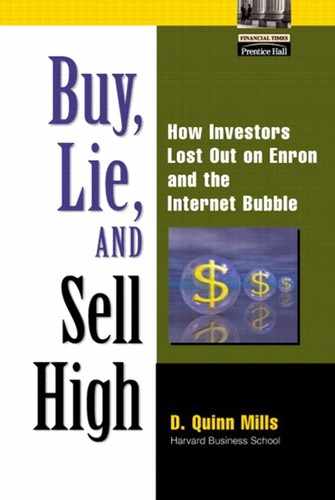What Did the Venture Firms Know?
The strongest evidence that many venture firms knew companies they were pushing into IPOs were not ready for the public market is the change in how venture firms viewed IPOs during the bubble. In essence, the IPO went from a financing event to an exit event (a so-called liquidity event).
It used to be that a venture firm thought of an IPO as one of a sequence of financing events for a company. The purpose of the IPO was to provide money for the continuing growth of the company; it was a critical event in building the company, not the end of building the company. The venture firm hoped to exit its investment profitably after a significant lag from the date of the IPO.
Had the purpose of an IPO been to raise money for the building of the company, then there would have been shouts of rage from the venture community when investment banks systematically underpriced IPOs. In the past, a successful IPO might rise 10 percent to 15 percent in the days after its offering. During the bubble it became common for shares to more than double on the first day of their offering, so that large sums went to speculators and not to the company. Entrepreneurs complained bitterly, as evidenced in some of the cases cited in this book, but venture firms were largely silent. They were looking for a fast exit, and the rise in the value of shares pleased them, while the loss to the company was no longer of concern to them.
During the bubble, the IPO became the desired exit event for many venture investors. The venture firm sought to get out of its investment as quickly as possible after the IPO. There is no better evidence that venture firms knew valuations of IPOs were grossly out of line than that they positioned themselves to get out of their investments via IPOs. There was no point in staying invested, because there was little likelihood of further appreciation of the financial value of the company, even if the company grew and became profitable. Financial value was so far ahead of economic value of the firm at the time of the IPO that the best return for the venture firm was to get out of its investment as quickly as possible. The venture firms saw this clearly. That some didn't get out was the result of one or two factors: Either investment banks had locked them up so that they couldn't sell for a period after the IPO, or some venture firms were so far taken by the momentum of share prices during the bubble that they thought a little more upside could be squeezed out. It appears that there were very few venture firms in the latter category.
